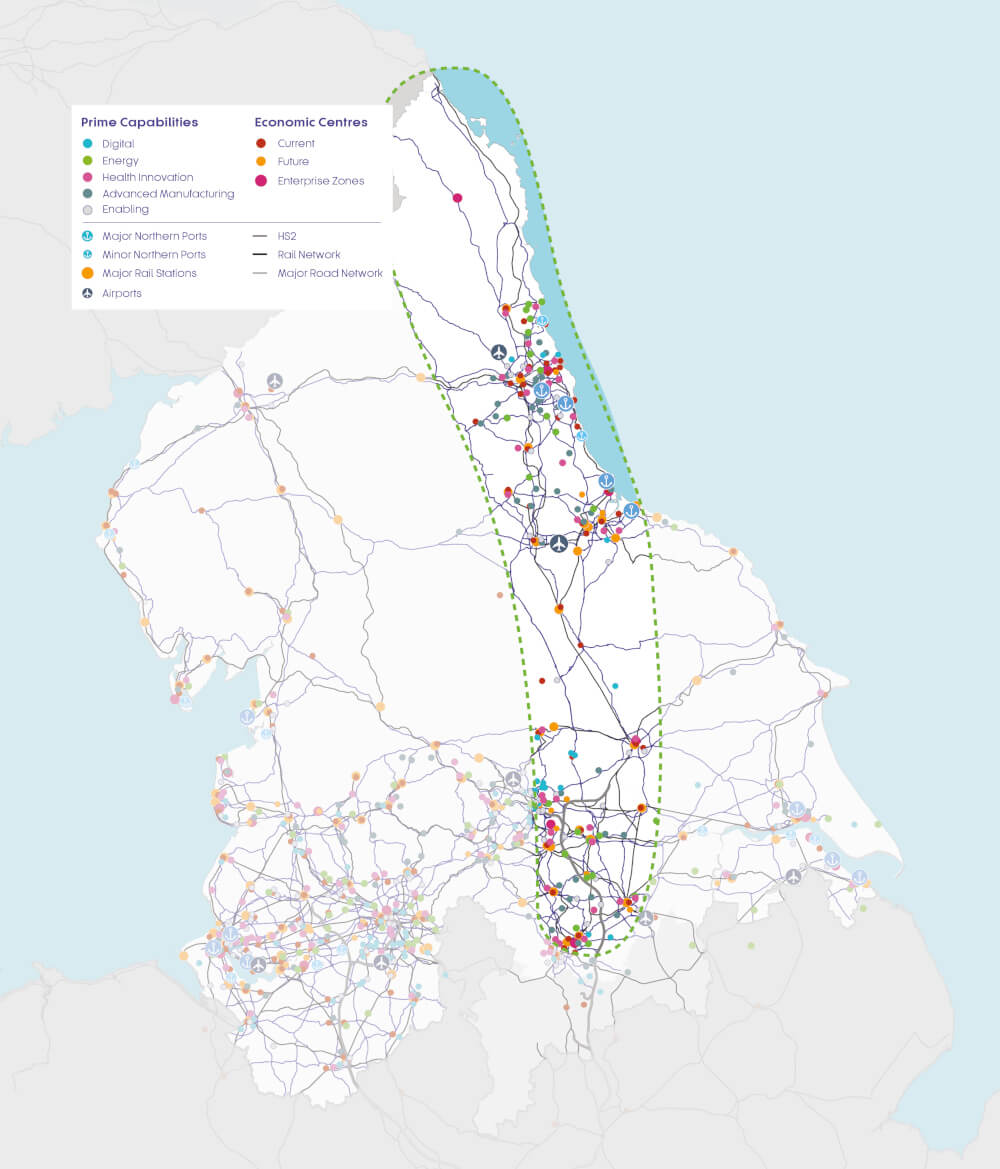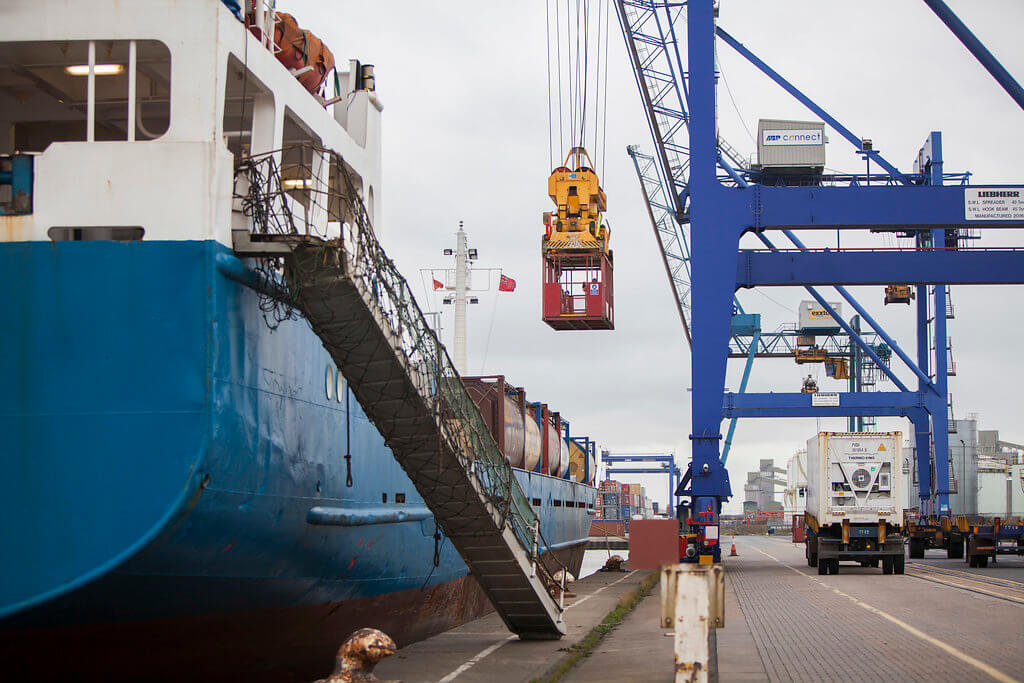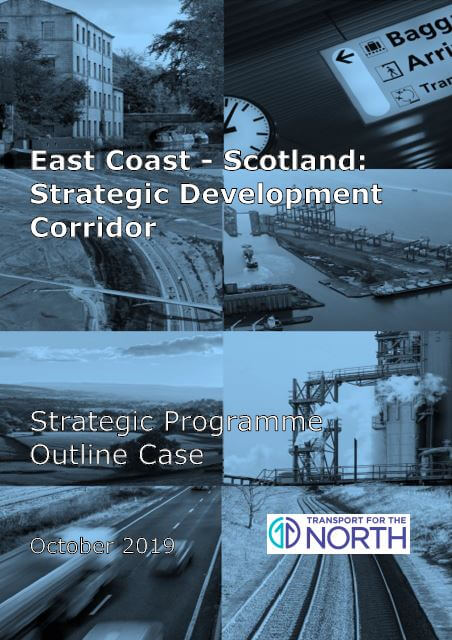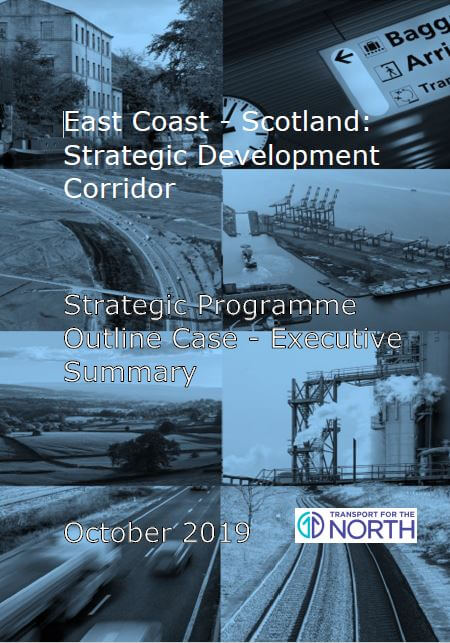







The outputs of this Strategic Development Corridor commission have informed our Investment Programme to provide a pipeline of projects to support economic growth in the North between now and 2050. This study will build on work done by Network Rail to identify the requirements for current and future passenger, freight rail movements, and the consequent implications for the transport network within the broad area and encompassing links from the Midlands, through the North, and to Scotland. It will also strengthen and complement the Yorkshire to Scotland road corridor.

The significant economic developments in this corridor include ports (Ports of Blyth, Berwick, Seaham, Tyne, Tees, Sunderland, Goole and the Ports on the Humber), airports (Newcastle, Durham Tees Valley, Leeds-Bradford, Doncaster Sheffield and Humberside), major rail hubs (Leeds, Sheffield, Newcastle, Doncaster, York), and intermodal freight terminals.
Advanced manufacturing is a particular strength with a strong automotive sector in the North East and the Tees Valley and advanced manufacturing and innovation corridor in the Sheffield City Region. There is also a growing renewable energy sector along the east coast, requiring collaboration and connectivity across the corridor, as well as integration with the Energy Coasts SDC findings. The North East also has particular strengths in the health sector, which are complemented by emerging growth areas within the Tees Valley, and Sheffield City Region, and a strong and growing health and life science sector in the Leeds City Region. There are significant freight and logistics centres along the corridor with key national links within the North East, as well as to the Midlands and Scotland. Both air and sea freight hubs provide a focus for growth in the movements of goods, supported by a growing inland port and distribution capability. There is also a strong visitor and tourism offer, including Hadrian’s Wall World Heritage Site, Northumberland Dark Skies Park, Northumberland and North Yorkshire Moors National Parks.


Work on this corridor will consider the following pan-northern objectives:
Although the East Coast Main Line provides a key spine for North-South freight and passenger movements, this rail corridor is wider than just that route, encompassing parallel rail lines, including the Durham Coast Line where journey time and peak capacity are key issues that constrain opportunities. This also reflects that investment in the Durham Coast and other routes is important to allow the East Coast Main Line to play its intended role as part of the Northern Powerhouse Rail and HS2 networks.


Investment is required at rail stations including Doncaster, Darlington, Middlesbrough, Newcastle, York, Hartlepool, Morpeth and Sunderland to increase capacity, promote economic growth, and make the most of the opportunities provided by HS2. There are existing capacity, operability, timetabling, and reliability constraints along the corridor, which is limiting economic growth and the movement of people. Effectively resolving these competing demands, particularly in the context of HS2 and Northern Powerhouse Rail is crucial to realising the potential of the rail network in this corridor.
The East Coast – Scotland Rail Corridor builds on work done by Network Rail to develop the East Coast Main Line Route Study: Railway Investment Choices published in June 2018. This aims to provide a rail industry view of what the investment needs on the East Coast Main Line and parallel routes are over a 30 year horizon.
Following the modelling and assessment of our long list of interventions we have completed a Strategic Outline Programme. This provides evidence towards our Investment Programme by providing a pipeline of projects that would support economic growth in the North between now and 2050.
This assessment saw The Yorkshire – Scotland SDC (Road only) and the East Coast – Scotland SDC (Rail only) merged into a multi-modal Strategic Outline Programme known as ‘East Coast – Scotland SDC’.
The Strategic Outline Programme sets out a programme of short (up to 2027), medium (2028-2035) and long term (post 2035) interventions, to be taken forward by us or our Partners.

Strategic Programme Outline Case (SPOC) for the East Coast - Scotland Strategic Development Corridor

Strategic Programme Outline Case (SPOC) Executive Summary for the East Coast - Scotland Strategic Development Corridor
Click on the buttons below for more information on each corridor
Connecting the Energy Coasts Central Pennines Southern Pennines West and Wales West Coast – Sheffield Yorkshire – Scotland
Strategic Development Corridors
CLOSE POPUP [X]